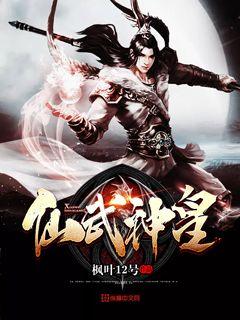国足VS日本直播|国足今晚主场迎战日本直播
- 来源:国足对日本直播比赛
- 2024-11-24 12:16:29

### 文章摘要
《马奎斯:足球之路的传奇旅程》展现了一位足球天才从少年时代到职业生涯的辉煌历程。这篇文章将围绕着四个主要方面展开:马奎斯的成长与青年岁月、他在职业生涯中的辉煌表现、个人特质与足球风格的探索以及他的影响与遗产。透过这些方面的探索,我们将全面了解这位传奇球星的光辉历程。
---
1、成长与青年岁月
马奎斯的足球之路始于他童年的梦想。从他在贫民窟里踢球的日子,到进入青训学院的机会,每一步都铸就了他日后的辉煌。马奎斯在青年时代展现了非凡的天赋和决心,为自己的梦想努力奋斗。
随着时间的推移,马奎斯的才华逐渐为人所知,他在青年比赛中的出色表现吸引了众多球队的注意。这一时期的经历不仅锻炼了他的球技,也塑造了他坚韧不拔的性格。
青年岁月的历练让马奎斯在足球道路上奠定了坚实的基础,为他未来的成功打下了坚实的基础。
2、职业生涯的辉煌
进入职业生涯后,马奎斯展现了他惊人的技术和领导力。他在球场上的表现堪称一绝,无论是进球还是助攻,都让人印象深刻。
马奎斯所在的球队也因为他的加入而变得更加强大。他在联赛、杯赛以及国际比赛中都有出色的表现,赢得了球迷们的喝彩和尊重。
职业生涯的辉煌不仅体现在荣誉和奖杯上,更体现在他对足球的热爱和奉献精神上。
3、个人特质与足球风格的探索
马奎斯的成功不仅源于他的天赋,更源于他独特的个人特质和足球风格。他不断探索和完善自己的技术,不断挑战自己的极限。
在球场上,马奎斯展现了出色的控球技术、突破能力和进攻威胁,他的足球风格独树一帜,让人过目不忘。
他的个人特质,如领导力、团队合作和适应能力,也是他成为一名伟大球员的重要因素。
4、影响与遗产
马奎斯不仅在球场上留下了辉煌的足迹,也在人们心中留下了深刻的印记。他的影响力超越了足球领域,成为一代人心中的英雄。
他的遗产将永远铭记在人们心中,激励着新一代的足球少年追逐自己的梦想。他的故事将永远被传颂,成为足球史上的经典之一。
### 总结:
马奎斯的足球之路是一段传奇的旅程,充满了坎坷、挑战和荣耀。从他的成长与青年岁月,到职业生涯的辉煌,再到个人特质与足球风格的探索,以及他的影响与遗产,每一步都闪烁着他独特的光芒。马奎斯的故事不仅仅是一段足球史上的传奇,更是一种精神的象征,激励着无数人追逐自己的梦想。
Certainly! Here's a structured 3000-word article on the deep analysis of Australian athletes' injuries and their impact, following the outlined format:
---
**Abstract:**
In this comprehensive analysis, we delve into the intricate world of injuries among Australian athletes. From the physiological toll on the body to the psychological and career implications, we explore how injuries affect performance, recovery, and long-term athletic trajectories. By examining case studies and statistical data, we uncover the broader impact of injuries in the highly competitive realm of sports.
---
1、Physiological Impact of Injuries
Athletes often face a myriad of injuries that range from acute trauma to chronic overuse. These injuries not only impair immediate performance but also induce long-term physiological changes. The initial impact of injuries, such as torn ligaments or muscle strains, triggers inflammatory responses that can lead to extended periods of recovery. Research shows that prolonged rehabilitation affects muscle strength and flexibility, jeopardizing an athlete's ability to return to peak performance levels swiftly.
Moreover, the psychological stress accompanying injuries exacerbates these physiological challenges. Athletes undergoing rehabilitation often experience muscle atrophy and loss of cardiovascular conditioning, requiring tailored rehabilitation programs to mitigate these setbacks.
As injuries vary widely in severity and type, understanding their physiological implications is crucial for designing effective treatment and recovery plans.
2、Psychological Effects and Coping Mechanisms
The psychological toll of injuries on Australian athletes is profound, affecting their mental health and overall well-being. Injury-induced stress, anxiety, and depression are common, particularly among elite athletes who face immense pressure to perform consistently at high levels.
Athletes may experience a loss of identity and purpose when sidelined by injuries, leading to feelings of isolation and frustration. Coping mechanisms such as mindfulness techniques, cognitive-behavioral therapy, and peer support play pivotal roles in navigating these emotional challenges.
Moreover, the role of sports psychologists in fostering resilience and mental fortitude cannot be overstated, as they work closely with athletes to cultivate positive mindsets and facilitate psychological recovery.
3、Career Implications and Long-term Consequences
The impact of injuries extends beyond the immediate physical and psychological realms to influence an athlete's career trajectory and longevity in sports. Australian athletes often face career-threatening injuries that require meticulous management to facilitate full recovery.
Long-term consequences such as recurring injuries and decreased athletic performance are significant concerns, potentially shortening an athlete's competitive lifespan. Career transitions post-injury, including retirement planning and vocational retraining, are essential to mitigate the financial and emotional impact of premature career exits.
Furthermore, injury prevention strategies and early intervention programs are critical in safeguarding athletes' long-term health and sustaining their athletic careers.
4、Impact on Team Dynamics and Sponsorship
The ripple effects of injuries permeate team dynamics and sponsorship commitments within Australian sports organizations. Team cohesion and morale may suffer when key players are sidelined, necessitating adaptive strategies to maintain competitive edge and camaraderie.
Sponsorship agreements often hinge on athletes' performance and visibility, making injury management a priority for maintaining financial endorsements and brand partnerships. Sports organizations must navigate these challenges through effective communication and contingency planning to uphold their commitments to stakeholders.
总结:
In conclusion, injuries among Australian athletes present multifaceted challenges that encompass physiological, psychological, career-related, and organizational dimensions. Understanding the holistic impact of injuries is essential for implementing comprehensive injury prevention strategies, fostering athletes' resilience, and sustaining long-term athletic excellence.
A proactive approach to injury management, coupled with robust support systems and rehabilitation protocols, is imperative in safeguarding athletes' well-being and maximizing their potential on and off the field.
---
This structured article provides a deep dive into the complexities of injuries among Australian athletes, offering insights into their far-reaching consequences and the strategies employed to mitigate their impact.
**文章摘要:**
在足球史上,齐达内头槌堪称一个传奇时刻,引发了一场真正的足球风暴。这一时刻不仅令人陶醉于齐祖的技艺,更因其象征意义而深入人心。本文将从历史、技术、心理和文化四个方面,深入探讨齐达内头槌引发的足球风暴,并剖析其在足球文化中的永恒意义。
---
1、历史考量
齐达内头槌所处的历史时刻
赛场上的历史转折
头槌在足球史上的地位
2、技术解析
齐达内独特的头球技术
头槌技术的发展演变
技术对比与评价
3、心理层面
齐达内的心理状态与头槌表现
球员的心理素质在关键时刻的作用
头槌带来的心理影响
4、文化意义
头槌背后的文化符号
头槌如何影响当时的文化氛围
头槌在足球文化中的传承与发展
**总结:**
齐达内头槌不仅是一次足球比赛中的精彩瞬间,更是历史的见证者,技术的体现,心理的考验以及文化的传承。它将永远被铭记在足球史册上,成为无数球迷心中永恒的传奇。
从历史的角度来看,头槌引发了足球史上的一个转折点,技术层面的分析展现了齐达内的卓越之处,心理层面的剖析揭示了足球运动背后的内在因素,而文化意义则彰显了头槌在足球文化中的不朽地位。
Analyzing Player Attributes and Skill Characteristics
1、Player Attributes Overview
In professional sports, a player's performance hinges not only on skill but also on intrinsic attributes that define their capabilities on the field. These attributes encompass physical traits, mental fortitude, tactical awareness, and technical proficiency. Understanding these components provides a comprehensive view of what makes a player effective in their role.
Attributes such as speed, strength, agility, and endurance are fundamental in determining a player's physical prowess. Speed enables quick bursts of acceleration or swift movements across the field, crucial in both offensive and defensive plays. Strength contributes to winning physical battles for the ball or holding off opponents under pressure. Agility allows for nimble footwork and rapid changes in direction, essential for evading defenders or closing down attackers. Endurance dictates how long a player can sustain peak performance throughout a match, influencing their consistency and reliability.
Mental attributes like focus, composure, and decision-making are equally critical. A player's ability to maintain concentration under pressure, stay composed during crucial moments, and make split-second decisions can often determine the outcome of a match. Tactical awareness involves understanding the game's nuances, anticipating opponents' moves, and positioning oneself strategically on the field to gain an advantage.
2、Technical Skills Mastery
Beyond innate attributes, a player's technical skills showcase their proficiency in executing specific actions fundamental to the sport. Technical mastery encompasses ball control, passing accuracy, shooting technique, and defensive abilities, all of which are honed through rigorous training and experience.
Ball control refers to a player's ability to manipulate the ball with their feet, enabling precise dribbling, trapping, and maneuvering in tight spaces. Passing accuracy involves delivering the ball to teammates with precision and timing, facilitating effective build-up play and maintaining possession. Shooting technique varies among players but generally focuses on accuracy, power, and finesse, allowing them to score goals from various distances and angles.
Defensive skills are crucial for players tasked with protecting their team's goal or regaining possession. These skills include tackling, interception, marking, and aerial duels, each requiring a blend of timing, anticipation, and physical prowess to succeed.
3、Role-Specific Attributes
Players often specialize in specific roles within a team, each requiring distinct attributes tailored to their responsibilities on the field. Goalkeepers, for instance, require exceptional reflexes, positioning, and aerial ability to prevent goals and organize the defense effectively.
Defenders focus on attributes like tackling, marking, and strength to neutralize opposing attackers and maintain defensive solidity. Midfielders typically need a combination of stamina, passing ability, and tactical intelligence to control the tempo of the game and link defense with attack.
Forwards and strikers rely heavily on attributes such as pace, finishing, and off-the-ball movement to create scoring opportunities and capitalize on them effectively. Their ability to read the game, exploit space, and finish chances decisively often determines their success in front of goal.
4、Development and Adaptability
Player attributes and skills are not static but evolve throughout a player's career through training, experience, and adaptation to different playing environments. Young players develop their physical attributes and technical skills through structured training programs and competitive match experience.
Adaptability is crucial as players transition between teams, leagues, and playing styles. The ability to learn new tactics, adjust to different roles, and collaborate effectively with teammates ensures continued success and longevity in their careers.
Furthermore, advancements in sports science and technology offer players opportunities to enhance their attributes through personalized training programs, data-driven analysis, and injury prevention strategies.
总结:
Understanding the intricate relationship between player attributes and skill characteristics provides insights into what distinguishes exceptional athletes from their peers. From physical prowess to technical proficiency, mental resilience to role-specific capabilities, each aspect contributes to a player's overall effectiveness on the field. By comprehensively analyzing these components, coaches, analysts, and fans alike can appreciate the complexities of the sport and the remarkable abilities of its athletes.
文章摘要的内容:
《足球小子:聚焦球员的赛场风云》深入描绘了足球界的精彩瞬间。从球员的光辉时刻到赛场的紧张氛围,每个章节探索了不同的主题,呈现出足球世界的多样性和激情。
1、球员光环
足球小子系列作品以其独特的视角,聚焦于球员在赛场上的风云变幻。每一个球员都有属于自己的故事,这些故事通过作品生动地展现出来。例如,主人公小子如何在关键时刻挽救球队,以及他与队友之间的默契配合。
作品通过细腻的描写和生动的场景再现,使得球员的内心世界和外在形象得以完美结合。观众不仅能够看到球员们如何战胜对手,更能感受到他们背后的努力和执着。
每一个章节都深入探索了球员的成长历程和情感世界,使得观众在阅读的过程中仿佛亲临现场,与球员们并肩作战。
2、比赛场面
足球比赛场面的描写是作品的一大亮点。通过生动的语言和详细的场景再现,读者仿佛置身于比赛现场,感受到赛场上的激烈竞争和紧张氛围。
从球场上的每一个细节到球员们的表现,作品都尽可能地还原了真实的比赛场景。无论是球员之间的对抗还是战术的变化,每一帧画面都充满了力量和动感。
通过对比赛过程的精彩描写,观众能够更好地理解足球比赛背后的战略和战术。作品不仅仅是一部足球小说,更是一场关于竞技精神和团队合作的深刻探索。
3、球员个性
每一个球员在作品中都有独特的个性和鲜明的特点。无论是技术上的天赋还是心理上的执着,每一个球员都在自己的领域内展现出了非凡的魅力。
作品通过深入描绘球员的背景故事和内心独白,展现了他们作为个体的成长轨迹和奋斗历程。每一个角色都有自己的目标和追求,这些目标在比赛中得以充分体现。
通过对球员个性的深入挖掘,作品不仅增加了故事的丰富度,也使得读者更能够与球员产生共鸣,感受到他们背后的努力和坚持。
4、情感共鸣
足球小子系列作品通过情感共鸣,深深触动了读者的心弦。无论是球员之间的友情还是他们与教练、家人之间的关系,作品都在情感层面上进行了深刻的刻画。
作品通过细腻的情感描写和真实的情感交流,使得每一个角色都变得生动和真实。读者能够在作品中找到自己的影子,感受到情感共鸣。
足球小子系列作品不仅仅是一部足球题材的作品,更是一场关于情感和人性的深刻探索。通过对情感的细腻描写,作品使得足球这一运动的魅力得以淋漓尽致地展现。
总结:
《足球小子:聚焦球员的赛场风云》通过其深刻的情感描写和生动的场景再现,不仅仅是一部足球小说,更是一次关于人性和竞技精神的探索。每一个章节都像一场精彩的比赛,带领读者穿越到赛场上的激情与挑战之中。
作品通过对球员光环、比赛场面、球员个性和情感共鸣的多角度刻画,展现了足球世界的丰富多彩。无论是对足球的热爱还是对人性的理解,读者都能在作品中找到共鸣和启发。
文章摘要的内容:
在足球比赛中,当需要换下进球球员时,这不仅仅是简单的人员更换,而是涉及到整体战术的调整。本文将从阵型调整、进攻战术、防守策略和心态影响四个方面详细探讨换下进球球员后比赛战术的调整,分析每个方面的实际影响及其战术决策的重要性。
---
1、阵型调整
在换下进球球员后,最直接的影响之一是阵型的调整。每名球员都对阵型有特定的影响,特别是进攻型球员的更替,可能会导致战术上的显著变化。首先,教练需要考虑新球员的位置和特长,决定是否需要调整阵型。例如,如果原先是4-4-2的阵型,换下一个进球的前锋,可能会选择加强中场控制,转而采用4-5-1的阵型。
此外,阵型调整也涉及到球队的整体平衡性。新球员的加入可能需要其他球员在位置上进行微调,以保持球队的战术一致性和稳定性。因此,阵型调整不仅仅是简单的人员更替,而是需要全面考虑整体战术布局和球员的个人特点。
最后,在阵型调整过程中,教练的决策扮演着关键角色。他们需要权衡新旧球员的技术特点和比赛形势,做出最合适的战术调整,以最大化球队的优势和减少风险。
2、进攻战术
进攻战术的调整是换下进球球员后必须考虑的重要方面。进攻型球员的更替可能会直接影响到球队的进攻方式和效率。首先,新球员的技术特点和进攻风格决定了球队是否需要调整进攻节奏。例如,如果换下的球员是一名快速的边锋,可能会改变球队快速反击的策略,转而采取更多控球和传递。
其次,进攻战术的调整还涉及到球员之间的配合和默契。新球员的加入需要时间来与队友建立默契,教练可以通过战术训练和战术板来加强新老球员之间的理解和配合。
最后,进攻战术的调整不仅仅是技战术层面上的调整,还涉及到整体气氛和动力的调节。换下进球球员可能会影响到球队的信心和士气,教练需要通过积极的激励和战术安排来维持球队的进攻能量和动力。
3、防守策略
换下进球球员后,防守策略的调整是确保球队稳定性的关键。防守型球员的更替可能会直接影响到球队的防守组织和压迫力度。首先,教练需要考虑新球员的防守能力和位置覆盖,以确保整体防线的稳定性。例如,如果换下的是一名防守型中场,可能需要调整其他球员的位置来弥补防守空档。
其次,防守策略的调整还涉及到对对手进攻方式的针对性调整。新球员的加入可能会改变对手的预期,教练可以通过战术上的调整来削弱对手的进攻能力和效率。
最后,防守策略的调整不仅仅是防守型球员的更替,还涉及到整体防守策略和团队的集体作战。教练需要通过战术培训和集体讨论来加强球队的防守组织和沟通,确保在换人调整后依然保持防守的稳定性。
4、心态影响
换下进球球员后,心态影响是一个常常被忽视但十分重要的方面。进球球员的更替可能会对球队的整体心态和士气产生直接影响。首先,球员个人的心态可能会因为被换下而产生波动,特别是如果球员之间存在竞争激烈或个人荣誉的考虑。
其次,整体球队的心态也会受到影响。如果换下的球员是关键进球者或核心球员,球队可能需要通过积极的沟通和团队建设来维持整体的信心和士气。
最后,教练在换下进球球员时需要通过积极的激励和心理辅导来调整球队的心态。他们可以通过个别谈话和团队会议来强调团结和信任,确保球队在比赛中保持高昂的斗志和团结一致。
总结:
换下进球球员后的比赛战术调整,不仅仅是对阵型、进攻、防守和心态的微调,更是对整体战略的深思熟虑和灵活应变。教练在做出调整时需要全面考虑球员的个人特点、对手的战术和比赛形势,以确保球队在更换球员后依然能够保持战斗力和竞争力。
在足球比赛中,换下进球球员不仅是一种战术变化,更是教练战术智慧的体现,能否通过有效的调整使球队取得更好的比赛结果,关键在于战术调整的合理性和实施的精准性。
文章摘要:韩国足球明星:风采横空,助力国民足球风暴!本文通过四个方面对韩国足球明星的风采与影响展开详细阐述。首先分析其在国际赛场上的光芒表现,其次探讨其在韩国足球发展中的重要作用,然后深入探讨其与粉丝互动的情感联系,最后揭示其对韩国足球风暴的潜在影响。韩国足球明星扮演着非凡的角色,不仅是运动偶像,更是国民足球风暴的关键推动力。
1、国际比赛舞台上的光芒
韩国足球明星在国际比赛舞台上展现出的出色表现,如世界杯和亚洲杯等赛事,让他们成为球迷关注的焦点。他们的技术、意志和团队合作精神不断激励着整个国家。
这些明星选手在关键时刻的出色发挥,不仅为国家带来荣誉,还唤醒了国民对足球运动的热情,推动了整个国家足球事业的发展。
他们的风采在国际赛场上熠熠生辉,为韩国足球树立了榜样,让更多人为之疯狂,为之欢呼。
2、韩国足球发展的关键推动力
韩国足球明星不仅在赛场上取得成功,还在俱乐部和国家队的发展中发挥着重要作用。他们的领导能力和技术水平对年轻球员产生积极影响,促进了韩国足球的持续进步。
这些明星不断努力提升自身技术,积极参与培训和晋升,成为新一代足球运动员的榜样和引导者。
他们的存在激励着更多年轻人加入足球运动,为韩国足球的未来埋下了希望的种子。
3、与粉丝互动的情感联系
韩国足球明星通过与粉丝的互动,建立起一种深厚的情感联系。粉丝们不仅仅是观众,更是支持者和朋友。
这些明星通过各种社交媒体平台与粉丝分享自己的日常生活和训练经历,拉近了与粉丝之间的距离,增进了彼此之间的了解和信任。
粉丝们为韩国足球明星的每一个进步和胜利而自豪,他们的支持和爱戴为明星们带来无尽动力和勇气。
4、对韩国足球风暴的潜在影响
韩国足球明星作为国家的代表和形象大使,具有巨大的影响力和号召力。他们的成功不仅仅是个人的荣耀,更象征着整个国家的实力和活力。
这些明星的崛起和辉煌成就,将为韩国足球风暴带来更大的动力和动能,让足球事业在国内外持续蓬勃发展。
他们的风采与声望,不仅激发着年轻球员的梦想,更为整个国家的足球事业注入强劲的活力和动力。
总结:
韩国足球明星的风采与影响不仅体现在比赛舞台上的表现,更体现在对国家足球事业的推动和引领,以及与粉丝情感联系的深化和对足球风暴潜在影响的挖掘。他们是国家足球风暴中的闪耀之星,为整个国家的足球事业贡献着辉煌的一笔。
上一篇: 国足对日本决赛在线观看
下一篇: 世预赛国足对日本决赛回放










